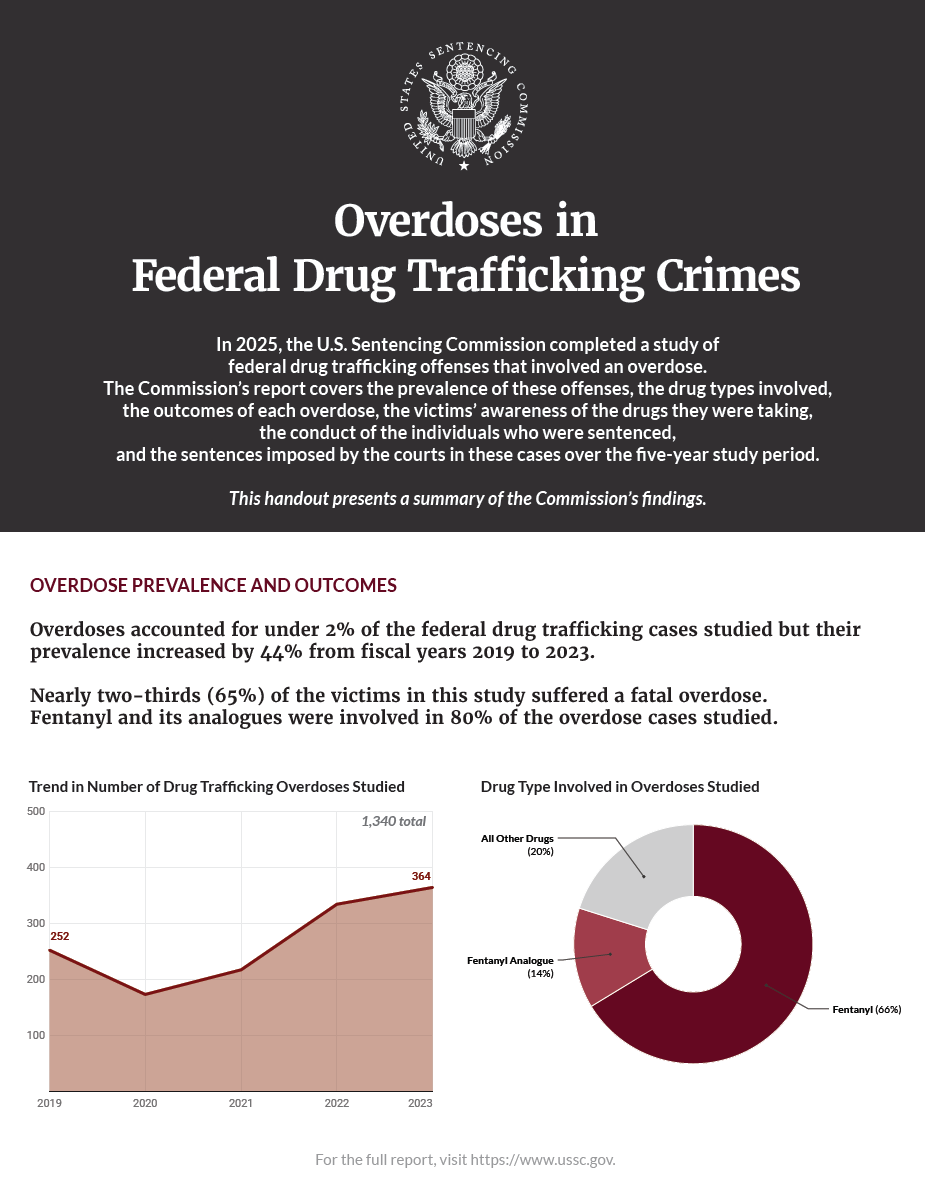In 2025, the U.S. Sentencing Commission completed a study of federal drug trafficking offenses that involved an overdose. The Commission’s research report Overdoses in Federal Drug Trafficking Crimes (published March 6, 2025) covers the prevalence of these offenses, the drug types involved, the outcomes of each overdose, the victims’ awareness of the drugs they were taking, the conduct of the individuals who were sentenced, and the sentences imposed by the courts in these cases over the five-year study period.
Click the cover of the Report-At-A-Glance for a PDF version or learn more below.
OVERDOSE PREVALENCE AND OUTCOMES
Overdoses accounted for under 2% of the federal drug trafficking cases studied but their prevalence increased by 44% from fiscal years 2019 to 2023.
Nearly two-thirds (65%) of the victims in this study suffered a fatal overdose. Fentanyl and its analogues were involved in 80% of the overdose cases studied.
OFFENSE CONDUCT AND AWARENESS
Information available to the Commission in presentence investigation reports demonstrated that most of the individuals in the study who sold the drugs and most who overdosed on those drugs did not know the exact drugs involved.
- 79% of victims who overdosed on fentanyl did not realize they were taking it;
- 92% of victims who overdosed on a fentanyl analogue were similarly unaware;
- 5% of sentenced individuals in the study knowingly misrepresented drugs they sold.
FUNCTION AND SENTENCING OUTCOMES
Over half (55%) of the sentenced individuals in this study functioned as street-level dealers and nearly one-quarter (24%) functioned as wholesalers.
Federal courts imposed an average sentence of 149 months in drug trafficking cases that involved an overdose—approximately double the average sentence when no overdose was reported (76 months) but sentences imposed in cases with an overdose varied by offense conduct.

